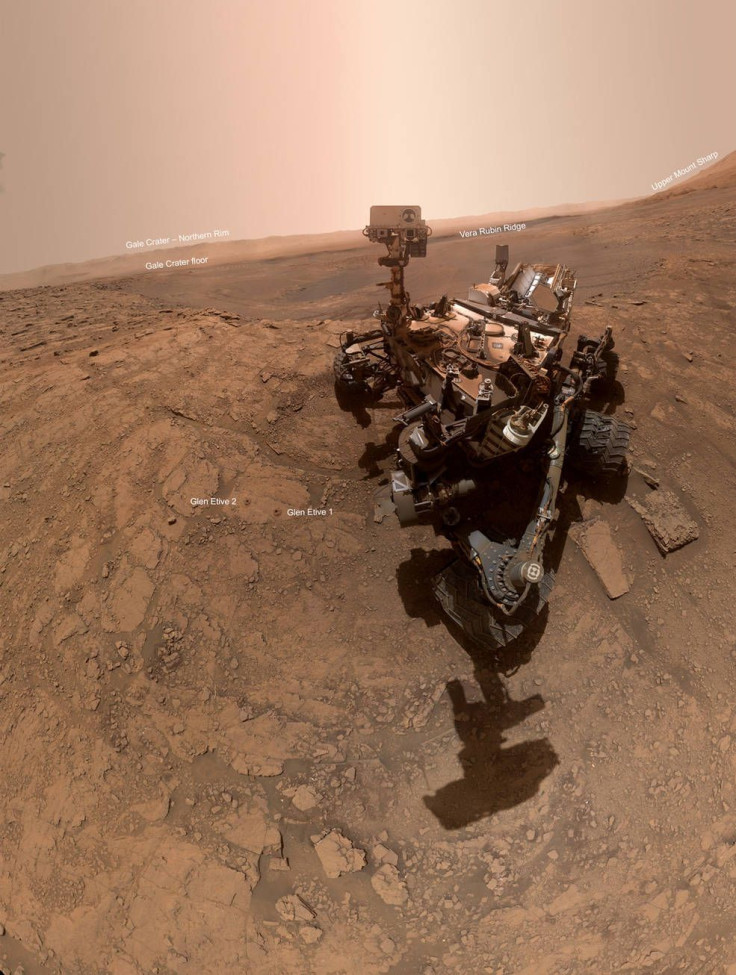NASA Mars Rover Takes A Selfie, Shows Gale Crater And Drilled Experiments [Photo]

NASA’s Curiosity rover has taken a new selfie on Mars. The photo was taken shortly after the rover conducted an important experiment aimed at identifying traces of life-forming compounds on the Red Planet.
The latest photo shared by NASA features an image of the rover that it took itself. According to the space agency, Curiosity’s selfie was stitched together using 57 images taken by the rover using the camera on its robotic arm.
The rover’s selfie was taken in a region known as Glen Etive, which is part of the clay-bearing region on Mars that NASA has been targeting to study ever since Curiosity’s launch. In the photo, the Vera Rubin Ridge, as well as the base of the Gale Crater, can be seen behind the rover.
Aside from Mars’ stunning landscape, another important image showcased in the photo are the two drill holes right beside the rover, which are referred to as Glen Etive 1 and Glen Etive 2. According to NASA, these holes were made by Curiosity as part of an important experiment it carried out on the Red Planet.

For the experiment, the rover took soil samples from the ground and placed it inside the Sample Analysis at Mars (SAM), which is a portable laboratory inside Curiosity’s body. The SAM works by heating up the samples in order to produce gases. The rover then analyzes these gases to determine if they contain chemicals that hold clues to the formation of microbial life on Mars.
Curiosity’s SAM contains 74 cups that the rover uses to test samples. Nine of these contain solvents that are used for wet chemistry experiments, which help the rover detect traces of carbon-based molecules in the samples it tests.
Since the rover carries a limited number of testing cups, the team behind Curiosity has been saving them. In fact, the recent test was only the second wet chemistry experiment that the rover conducted ever since it touched down on the Red Planet in 2012.
"We've been eager to find an area that would be compelling enough to do wet chemistry," Paul Mahaffy of NASA's Goddard Space Flight Center and the principal investigator for SAM said in a statement. "Now that we're in the clay-bearing unit, we've finally got it."
Currently, NASA and the team behind Curiosity are still waiting for SAM to complete its analysis of the samples. They expect to see the results from the experiment next year.
© Copyright IBTimes 2024. All rights reserved.





















